
The goal is education. Εχουμε 64 million students in it. India has about 320 εκατομμύριο (ηλικίες 5 να 14). Bob Compton’s film, Δύο εκατομμύρια Λεπτά, observed that many students in India and China spend more time acquiring academic knowledge. What works in the Indian culture is going to be different from what works in our American culture. Some might argue we spend our time developing the well-rounded child . Does it matter to many Americans that while we study the Super Bowl and Glee, Indian and Chinese students spend more time building their intellectual foundation? Ναί, poverty and weak infrastructure are challenges India faces, but often when you’re coming from behind you’re more hungry to achieve. These are our global friends και our competitors.
It is India Time — India will participate in the next PISA test (Πρόγραμμα Διεθνούς Αξιολόγησης Μαθητών) — για πρώτη φορά. There have been a number of new educational initiatives that have made this possible. One of the major programs was explained to me by Sridhar Rajagopalan (Head of Educational Initiatives), a man on a mission to revolutionize the way Indians and others think about learning.
What kind of educational system will permit India to have the people skills needed to compete globally?
The goal would be to have an educational system that allows people to reach their full academic potential. This will enable India to compete globally and to have a domestic society where people are engaging meaningfully and are able to solve the problems faced by their society. The system would need to focus on academic excellence and research, and also on developing compassionate and caring individuals.
What are your major challenges?
One of the basic problems the Indian education system faces is our high focus on rote learning. The problem of rote learning is discussed in many countries around the world, including America. Ωστόσο,, I think rote learning is a severe problem in India. Rote learning is like saying you don’t need to understand; you don’t need to be able to think and apply knowledge; as long as you can recite what is in a lesson in a textbook, that’s fine. This problem is reflected in our school leaving exams. It’s reflected in the fact that certification is the all important focus, versus learning. The problem is even more serious in rural areas where children are struggling to develop basic skills. So our system needs to focus on learning with understanding, developing critical thinking skills, and developing a lifelong passion for learning.
So if you change the way you test, it might influence the way children are taught?
Απολύτως. The primary purpose for which we use testing is so that the system, the parents, οι δάσκαλοι, and the government understand that students are learning. If we change the way we currently test, we can improve both the way we teach and the quality of what children learn. We are beginning to make the first few steps in this direction.
What have you done in the past 5 – 10 χρόνια για να βελτιώσει την αξιολόγηση των μαθητών?
Ξεκινήσαμε το έργο μας με την εκτίμηση χαμηλά πονταρίσματα. Το πρώτο βήμα περιλαμβάνει τακτικές αξιολογήσεις. Ο σκοπός είναι να διαγνώσει και να δώσει ένα σημείο αναφοράς. Διαγνωστική εργασία μας έχει θεωρηθεί αιχμής σε σχέση με το υπόλοιπο του κόσμου. Ένα από τα πλεονεκτήματα μας είναι πολύ μεγάλο δείγμα βάσης μας από τους μαθητές. Το δεύτερο πλεονέκτημα που έχουμε είναι ότι πάμε σε μεγάλο βάθος στη διαγνωστική εργασία μας, π.χ.. τι οι μαθητές καταλαβαίνουν σχετικά γωνίες. Όταν κάνουμε μια αξιολόγηση των μαθητών έχουμε συλλάβει τους μαθητές’ απαντήσεις σε βίντεο. Τα βίντεο γίνονται πολύ χρήσιμη για την κατάρτιση και την υποστήριξη του δασκάλου.
Το επόμενο βήμα είναι όπου η τεχνολογία έρχεται σε. Σε κάθε στάδιο της διδασκαλίας μια νέα έννοια, υπάρχουν πολλές πιθανές παρανοήσεις από τους μαθητές. Αντί να περιμένουμε έναν δάσκαλο να εντοπίσει όλες αυτές τις παρανοήσεις, όταν έχει 35 ή περισσότερα παιδιά στην τάξη της, έχουμε ανακαλύψει ότι με προσεκτικά αναπτυχθεί προγράμματα ηλεκτρονικών υπολογιστών, μπορούμε να το κάνουμε αυτό για το δάσκαλο. Επιτρέψτε μου να σας δώσω ένα παράδειγμα. Εάν ένα παιδί δεν έχει κατανοήσει μια έννοια, a teacher might feel she needs to teach that child the concept all over again. With the help of our diagnostic tools, we can assist the teacher to better understand exactly where the child’s lack of comprehension lies, enabling the teacher to better focus the child towards the correct answer. We have created a personalized, intelligent computer based learning program that is based on the misconceptions research — a program called Mindsparkthat has been used by leading Indian schools for over 2 χρόνια, και έχει μόλις αρχίσει να χρησιμοποιούνται στην αγροτική Ινδία και τις ΗΠΑ.
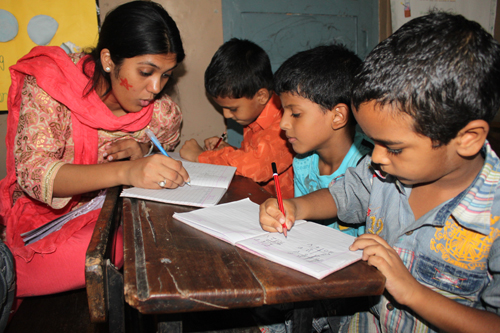
Πόσο ευρεία είναι η κατανομή αυτής της πρωτοβουλίας αξιολόγησης και ό, τι έχει επιπτώσεις της?
Αυτή τη στιγμή εργάζονται με 3,000 ιδιωτικά σχολεία. Ομοίως εργαζόμαστε σε κρατικά σχολεία σε περίπου 20 έξω από 28 πολιτείες της Ινδίας, πολλές χώρες της Νότιας Ασίας, του Κόλπου, και στη Σιγκαπούρη. Μέσα από μια πρωτοβουλία που υποστηρίζεται από την Google και σε συνεργασία με διάφορες κυβερνήσεις των πολιτειών, πραγματοποιήσαμε μια αναλυτική κατηγορία σοφός εκτίμηση για τα επίπεδα μάθησης των μαθητών σε 2009. We have just completed an assessment (in partnership with the government of Mumbai, UNICEF and McKinsey) for every single child in Mumbai in 3rd and 6th grade, and are now doing the same thing with two of our other most progressive states. We expect to see additional states following this lead. Governments have invited us to join committees to reform assessments based on our success. Large systems tend to move slowly, but people are interested in making the kinds of changes I am describing. The fact that government has now supported India’s participation in PISA is an example of government confidence that this approach is working.
What is your view about the impact of academic pressure on student mental health and emotional well being?
Our problems right now in India are different to those of more developed nations. India has a poor education system. Ωστόσο,, our society values education more than anything. Success in education means getting a good job. Αμέσως, a very small percentage (λιγότερο από 15%) of our children reach higher education. This is not because of lack of interest. Our problem is poverty and low quality of education. In certain elite schools, there has been some discussion about pressure and test taking. But most parents and teachers believe the pressure is inevitable and necessary because of the competition that exists due to supply and demand for good college places.
What is your vision of the well educated Indian student?
There would be three constants. The first bucket I would call critical thinking, which would include creative thinking and the ability to solve problems. Values and ethics would be in my next bucket: compassion and sensitivity and an understanding of the importance of contributing to your society. Then my final bucket would include strong academic stills along with the desire to excel and to do excellent work.
World Wisdom from India
Rote learning will not lead to educational excellence. A successful system will not focus on end of school exams, but rather on the ability to think and apply knowledge and to produce compassionate and sensitive human beings. Change the way you test to improve the way you teach and the quality of learning. The value that society places on education and the individual’s hunger to learn will have a significant impact on a country’s educational progress.
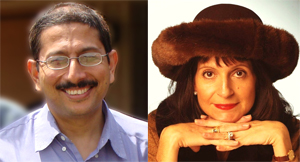

Σε Η Σφαιρική Αναζήτηση για Εκπαίδευση, ενταχθούν Ο.Μ.. Rubin και παγκοσμίως γνωστή ηγέτες σκέψης συμπεριλαμβανομένου του Sir Michael Κομμωτήριο (Ηνωμένο Βασίλειο), Ο Δρ. Leon Botstein (ΗΠΑ), Ο Δρ. Linda Ντάρλινγκ-Hammond (ΗΠΑ), Ο Δρ. Madhav Chavan (Ινδία), Ο καθηγητής Michael Fullan (Καναδάς), Ο καθηγητής Howard Gardner (ΗΠΑ), Ο καθηγητής Yvonne Hellman (Η Ολλανδία), Ο καθηγητής Kristin Helstad (Νορβηγία), Καθηγητής Rose Hipkins (Νέα Ζηλανδία), Καθηγητής Cornelia Hoogland (Καναδάς), Η κ. Chantal Kaufmann (Βέλγιο), Ο καθηγητής Dominique Λαφοντέν (Βέλγιο), Ο καθηγητής Hugh Lauder (Ηνωμένο Βασίλειο), Καθηγητής Ben Levin (Καναδάς), Καθηγητής Barry McGaw (Αυστραλία), Sridhar Rajagopalan (Ινδία), Sir Ken Robinson (Ηνωμένο Βασίλειο), Καθηγητής Pasi Sahlberg (Φινλανδία), Andreas Schleicher (PISA, ΟΟΣΑ), Ο Δρ. David Shaffer (ΗΠΑ), Στήβεν Spahn (ΗΠΑ), Yves Theze (Γαλλικό λύκειο των ΗΠΑ), Ο καθηγητής Charles Ungerleider (Καναδάς), Ο καθηγητής Tony Wagner (ΗΠΑ), Καθηγητής Dylan Γουίλιαμ (Ηνωμένο Βασίλειο), Ο καθηγητής Theo Wubbels (Η Ολλανδία), Ο καθηγητής Michael Young (Ηνωμένο Βασίλειο), και ο καθηγητής Minxuan Zhang (Κίνα) καθώς εξερευνούν τα μεγάλα ζητήματα της εκπαίδευσης εικόνα που όλα τα έθνη αντιμετωπίζουν σήμερα. Η Παγκόσμια αναζήτηση για την Εκπαίδευση της Κοινότητας Σελίδα
C. M. Rubin είναι ο συγγραφέας των δύο πολυδιαβασμένα online σειρά για την οποία έλαβε ένα 2011 Βραβείο Upton Sinclair, “Η Σφαιρική Αναζήτηση για Εκπαίδευση” και “Πώς θα μας Διαβάστε?” Είναι επίσης ο συγγραφέας του μπεστ σέλερ τρία βιβλία, Συμπεριλαμβανομένων Η Ρεάλ Αλίκη στη Χώρα των Θαυμάτων.

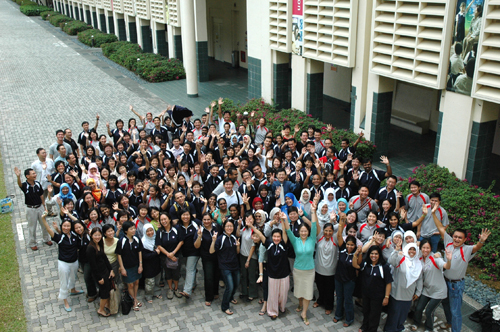
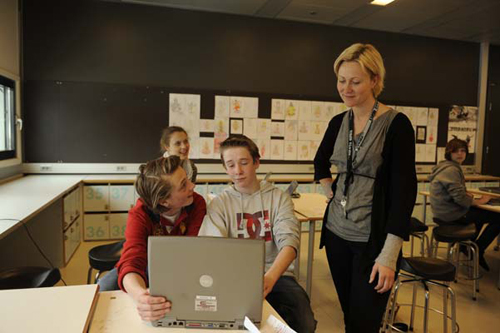
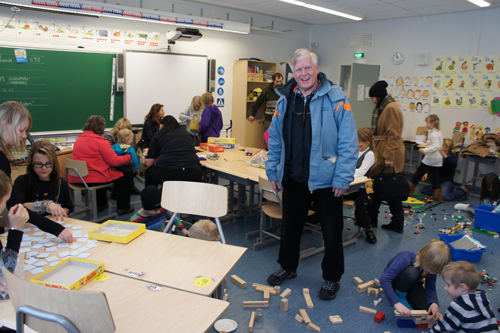
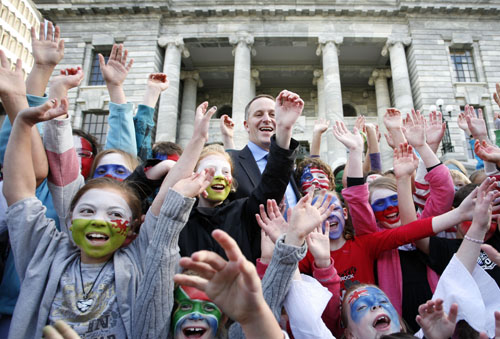
Πρόσφατα σχόλια